The Enchanting Beauty of Lake Holon
Deep within the lush greenery of South Cotabato, the Philippines lies a hidden gem that is yet to be discovered by many – the tranquil and captivating Lake Holon. Located at approximately 4,700 feet above sea level, this stunning lake is nestled at the top of Mount Parker. The serene atmosphere created by its crystal-clear waters surrounded by towering peaks makes it an idyllic spot for nature lovers and adventure seekers alike.
The Basics of Lake Holon
Size, Depth, and Elevation of the Lake
Lake Holon is a crater lake located in the province of South Cotabato in the Philippines. It is also known as the Maughan Lake and is situated at an elevation of approximately 1,200 meters above sea level.
The lake has a diameter of about 300 meters and a maximum depth of around 120 meters. At its deepest point, it is said to be able to accommodate a building as tall as the Eiffel Tower!
The lake’s water is crystal-clear and bright blue, making it very attractive to visitors who want to swim or just relax by its shores. However, because of its depth and location at a high altitude, swimming in the lake can be quite cold even during summer.
Formation and Geological History
Lake Holon formed roughly 6,000 years ago when a massive volcanic eruption occurred in what is now known as Mount Parker or Melibengoy. The eruption resulted in the formation of a large crater that later became flooded with water from rainfalls and streams. Over time, sediments accumulated at the bottom of the lake which resulted in its shallow parts becoming landmasses that are surrounded by deep water.
Because of this unique feature, Lake Holon is sometimes called ‘the crown jewel’ among all Philippine lakes. Geologists believe that Mount Parker remains active up until today though no major eruptions have occurred for several centuries now.
Despite this calm status quo, local authorities closely monitor seismic activities around Mount Parker for possible volcanic risk assessment. Visiting Lake Holon provides not only an opportunity to relax amidst breathtaking natural scenery but also gives an insight into how forces beyond human control can play such significant roles in shaping our world – something that neither science nor folklore cannot fully explain today!
Getting There
Transportation Options to Reach the Lake
Lake Holon is located in the southern part of Mindanao, Philippines. Since it’s nestled in the mountains, there are no direct flights or major highways that lead to this destination. However, that doesn’t mean it’s inaccessible.
There are several transportation options available to reach Lake Holon. One way to get there is through General Santos City, which has an airport and a seaport that serves as a gateway to the south.
From GenSan city center, you can take a van or bus bound for T’boli town where Lake Holon is located. The journey usually takes two hours and costs around PHP 120-150.
Another option would be through Koronadal City, which is approximately an hour away from T’boli town. If you’re coming from Davao City (the largest city in Mindanao), you can take a bus or van bound for Koronadal City and then ride another van going to T’boli town.
Hiking Trails and Difficulty Levels
Once you arrive in T’boli town, the next step involves hiking up towards Lake Holon. There are two established hiking trails available: Kule Trail and Salacafe Trail.
The Kule Trail is considered as the standard trail used by most hikers since its starting point begins at Sitio Kule where most visitors stay overnight before their trek up the lake. This trail measures around 9 kilometers with a difficulty level of 4/9 due to its steep elevation gain over rocky terrain.
If you’re looking for less challenging trail alternatives with more scenic views, then Salacafe Trail might be suitable for you. This trail spans approximately 11 km with a difficulty level of 5/9 but features several breathtaking viewpoints along the way such as Ninum Sulugon, Mefali Cliffs, and Sabang Twin Falls.
It is advisable to hire a guide and to register at the tourism office in T’boli town before embarking on any of these trails. The guides are locals who know the area well and can provide insights into the culture and history of Lake Holon.
They also ensure hikers’ safety, especially during sudden weather changes. The fees usually range from PHP 500-1500 depending on the number of days and services you require.
Overall, getting to Lake Holon requires some effort but it’s definitely worth it. The journey offers awe-inspiring views of lush green forests, waterfalls, rivers, wildlife, and local communities along with an opportunity for visitors to connect with nature while experiencing a unique outdoor adventure.
Camping at Lake Holon
Best campsites and amenities available
Camping at Lake Holon is one of the most popular activities among visitors. There are several campsites around the lake, each with its own unique features.
The most popular campsite is located on the northern side of the lake, offering stunning views of the water and surrounding mountains. This campsite also has a freshwater spring nearby, providing clean drinking water for campers.
Another great option is the southern campsite which boasts a large open space perfect for group camping. Additionally, this site offers access to hiking trails that lead to some of the best viewpoints around Lake Holon.
If you’re looking for a more secluded camping experience, there are several smaller and more intimate campsites scattered throughout the areas surrounding Lake Holon. These sites offer more privacy and serene views for those looking for a break from civilization.
In terms of amenities, all campsites offer basic facilities such as toilets and fresh water sources. Additionally, there are fire pits available in most sites for cooking or staying warm during cooler nights.
Tips for camping in the area
While camping around Lake Holon can be an amazing experience, it’s important to come prepared. Here are some tips to make your trip more comfortable:
– Always check weather forecasts before heading out into nature around Lake Holon.
– Bring enough food supplies with you to last your entire stay as there aren’t any stores or restaurants nearby. – Be sure to pack good quality sleeping bags that will keep you warm during cold nights.
– Don’t forget to bring insect repellent as mosquitoes can be quite thick in some areas around Lake Holon. – Bring appropriate footwear such as hiking shoes or boots since terrain can be uneven.
– Respect rules and regulations regarding fires; only light fires within designated fire pits and put out fires completely before leaving the area. By following these tips, you’ll be well-prepared to enjoy a comfortable and memorable camping experience at Lake Holon.
Activities at Lake Holon
Swimming: Plunge into the crystal-clear waters!
Lake Holon is truly a paradise for water lovers. The pristine and clear water beckons visitors to take a dip and enjoy the cool, refreshing swim. One of the best things about swimming in Lake Holon is that it’s not crowded, so you can enjoy your swim without any distractions and soak up the tranquility of nature.
The temperature of the water is just perfect – not too cold nor too warm. It’s like nature has designed this lake specifically for swimming!
Fishing: Reel in your catch of the day!
Fishing enthusiasts will be delighted to know that Lake Holon boasts an abundant variety of fish species including tilapia, carp, and catfish among others. The lake is also home to endemic species such as holon goby, which can only be found in this region! You can rent a boat or bring your own to explore different parts of the lake and cast your line at your preferred spot.
Boating: Glide along on calm waters
If you want to explore more than just swimming or fishing, boating is another way to experience Lake Holon. The placid waters provide an ideal environment for canoeing or kayaking. Renting a boat also allows you to explore hidden coves around the lake where you may be lucky enough to spot some wildlife.
Hiking Trails: Beat Your Own Path!
Anyone who loves hiking will find no shortage of options around Lake Holon. There are many trails that lead up to stunning scenic views of the lake surrounded by mountains and lush green forests! Choose from easy day hikes or more challenging multi-day treks through diverse terrain with varying difficulty levels ranging from beginner to advanced.
Wildlife Viewing Opportunities: Observe Nature’s Wonders
Lake Holon’s surrounding forests are home to a diverse range of flora and fauna. Wildlife enthusiasts will have the opportunity to encounter a variety of creatures including monkeys, squirrels, birds, and even rare species like the Philippine tarsier.
The lake itself is also home to holon goby fish species that can only be found in this lake! Whether you’re a seasoned photographer or just an avid nature lover, you’re sure to appreciate the unique beauty of Lake Holon.
Cultural Significance
Importance of Lake Holon to Indigenous Communities in the Area
Lake Holon, situated in the T’boli municipality of South Cotabato, Philippines, is not just a stunning natural wonder. It also holds immense cultural importance for the T’boli people, who have lived in the region for centuries. The T’boli tribe is one of the many indigenous groups that call Mindanao home.
As such, their culture and traditions are deeply intertwined with nature and its elements. For the T’boli people, Lake Holon is considered sacred because it’s believed to be home to their deity known as “Fiuwe”.
Preserving Cultural Heritage at Lake Holon
As more tourists discover Lake Holon’s beauty, cultural preservation has become a pressing issue. The T’boli tribe has been working hard to preserve their traditions and heritage while also accommodating visitors. One way they’ve done this is by incorporating traditional dances and performances into tourism activities.
Visitors can watch performances by local dance troupes that showcase the intricate rhythmic movements of T’boli dancers wearing traditional attire. Additionally, local guides offer tours around the lake and surrounding areas, providing insights into T’boli culture and history.
They also encourage visitors to respect local customs by not littering or damaging any natural landmarks during their stay. Overall, preserving the cultural heritage at Lake Holon is crucial in maintaining its beauty and significance for future generations.
Conservation Efforts
Ongoing efforts to protect and preserve the lake’s ecosystem
Lake Holon is a fragile ecosystem that is threatened by human activity and climate change. The local government and indigenous communities have initiated several measures to preserve this natural wonder. No motorized boats are allowed on the lake, and visitors are required to take their trash back with them after camping.
The local government has set up waste management systems in the area, including composting pits for organic waste, and recycling bins for plastics, glass, metals, and paper. To reduce soil erosion around the lake’s perimeter, reforestation projects have been undertaken in collaboration with indigenous peoples’ groups.
Trees have been planted along hiking trails leading to Lake Holon to prevent soil erosion caused by foot traffic. This helps maintain the clarity of the water which is essential for marine life.
Ways visitors can contribute to conservation efforts
Visitors can contribute significantly towards preserving Lake Holon by being mindful of their environmental impact while in the area. One way is to follow Leave No Trace principles while camping at Lake Holon or hiking around it.
Another way visitors can help conserve this beautiful natural wonder is by supporting local conservation organizations. Visitors can also learn more about sustainable tourism practices through community-based tourism initiatives like Homestay T’boli or T’nalak Dreamweavers Cooperative which provide interactive cultural experiences while helping support local economies.
One critical step visitors can take towards conserving Lake Holon is by engaging with local authorities on issues affecting its preservation. They could take part in volunteer programs targeting litter cleaning campaigns or restoration activities aimed at reviving its unique biodiversity.
Lake Holon is a precious gem that should be protected and conserved for generations to come. It is up to every visitor to contribute towards keeping it pristine by embracing sustainable tourism practices, supporting conservation organizations, and engaging with local communities to protect this natural wonder.
The Hidden Wonders of Lake Holon
The Mysterious Legends Surrounding Lake Holon
Lake Holon is no ordinary lake – it is a place steeped in legends and stories passed down for generations. One such tale tells of a giant serpent that dwells in the depths of the lake. According to local folklore, the serpent would emerge from the water to devour anyone foolish enough to wander too close to its lair.
Another legend speaks of a powerful sorceress who lived near the lake and could control its waters at will. Some say she could even summon terrifying creatures from the depths with her magic.
One particularly fascinating local belief is that Lake Holon was once home to an advanced civilization that has long since vanished beneath its waters. According to this theory, their ancient structures still lie hidden beneath the murky depths, waiting to be discovered by intrepid explorers.
The Volcanic Origins of Lake Holon
While it may seem like just another serene body of water, Lake Holon actually has a much more violent past – it was created by a massive volcanic eruption! The lake sits within the crater of Mount Parker, which erupted around 500 years ago and formed a caldera nearly 6 kilometers wide. Interestingly enough, there are still signs today that indicate just how explosive this eruption was.
The rocks surrounding Lake Holon are mostly made up of pumice – a light and porous volcanic rock that can float on water! In fact, if you take a careful look around while hiking in certain areas near the lake, you might spot some pumice rocks scattered about.
The Unusual Coloration of Lake Holon’s Waters
Unlike most lakes that have clear or blue-green waters, Lake Holon’s coloration is unique – it changes depending on what time of day it is! In bright sunlight, the lake’s waters take on a deep, almost black hue. As the day progresses and the sun begins to set, the water gradually lightens in color until it becomes a shimmering shade of turquoise.
This unusual color-changing effect is due to the water’s high concentrations of dissolved organic matter. These organic compounds absorb light at different wavelengths depending on how much light is present and what time of day it is, resulting in Lake Holon’s one-of-a-kind coloration.
The Biodiversity of Lake Holon
Despite its remote location in the mountains, Lake Holon is actually home to a surprisingly diverse array of wildlife. In fact, it’s considered one of the most biodiverse areas in all of Mindanao!
The lake supports several species of freshwater fish including tilapia and catfish, while its surrounding forests are home to everything from wild boars and deer to rare bird species like Philippine eagles. One particularly interesting animal that can be found near Lake Holon is the Mindanao tree shrew.
This tiny mammal has an unusual adaptation – it can drink nectar from flowers just like a hummingbird! In fact, it’s long snout and extended tongue make it look almost identical to these winged creatures when it feeds.
The Future of Lake Holon
As with many natural wonders around the world, Lake Holon faces threats from human activity such as illegal logging and overfishing. However, there are also many individuals and organizations working hard to protect this special place for generations to come. One example of this is the T’boli tribe who call Lake Holon their ancestral home.
They have been instrumental in advocating for conservation efforts aimed at preserving both the lake itself as well as its surrounding forests. Additionally, various government agencies have been stepping up their efforts to combat illegal logging operations in nearby areas which threaten both local communities and the environment.
Lake Holon is not just a beautiful natural wonder but also a place rich in history, biodiversity, and cultural significance. By learning more about the lesser-known facts surrounding this incredible lake, we can deepen our appreciation of its many wonders and work together to ensure it remains protected for generations to come.
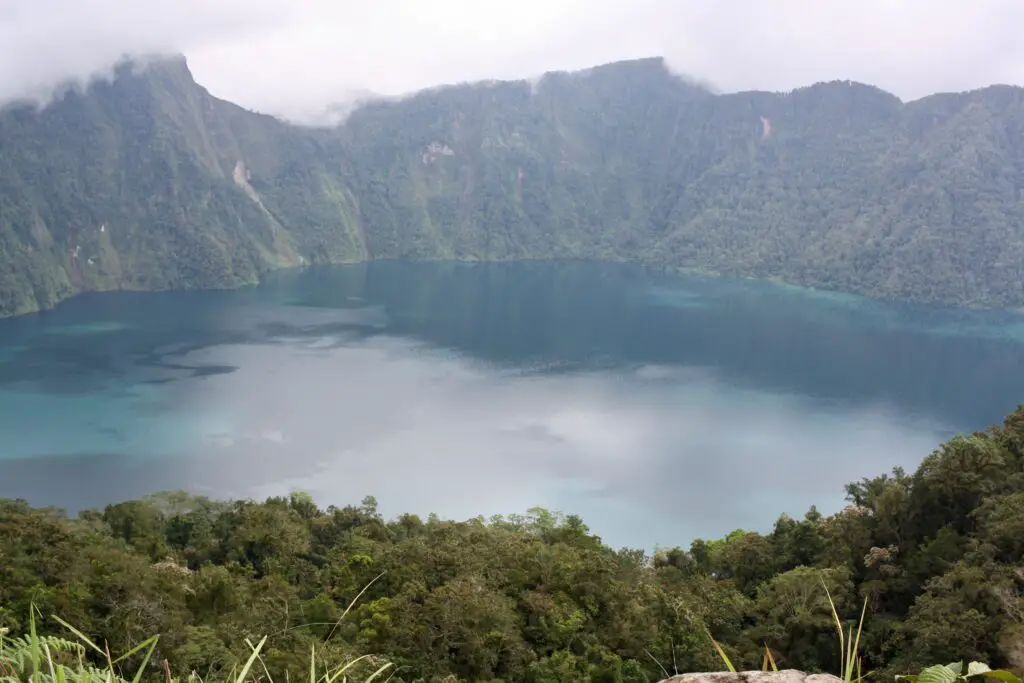
Conclusion
Lake Holon is truly a gem of nature that offers visitors a unique experience surrounded by breathtaking scenery, cultural significance, and recreational opportunities. It is an ideal destination for those looking to escape the hustle and bustle of city life and connect with nature. In terms of beauty, Lake Holon is undoubtedly one of the most picturesque locations in the Philippines.
The shimmering blue waters surrounded by lush green forests and towering mountains create a stunning panorama that will leave any visitor awe-struck. Whether you’re an avid photographer or simply appreciate natural beauty, Lake Holon’s breathtaking landscape will not disappoint.
The lake’s cultural significance is another factor that makes it a must-visit destination for anyone interested in learning about indigenous cultures in the Philippines. For centuries, the T’boli people have considered Lake Holon to be a sacred ground and an important site for traditional rituals and ceremonies.
By visiting Lake Holon, visitors can gain insight into the rich cultural heritage of these communities while also appreciating their deep connection to nature. For adventure-seekers, Lake Holon offers plenty of opportunities for outdoor activities such as swimming, fishing, boating, and hiking trails around the lake as well as wildlife viewing opportunities.
The surrounding forests are home to exotic wildlife species such as Philippine tarsiers and hornbills among others. Visitors can immerse themselves in nature and take advantage of these thrilling experiences.
Conservation efforts at Lake Holon are also noteworthy. The government has taken steps to protect this natural wonder through various initiatives including reforestation programs and strict regulations on activities within the area.
Visitors can play an important role in supporting these efforts by practicing responsible tourism habits like picking up trash or following designated trails instead of cutting through underbrush etc. Whether you’re looking for relaxation or adventure amidst beautiful surroundings immersed in the culture with a conservation focus—Lake Holon has something special to offer everyone who visits.
The beauty, cultural significance, recreational opportunities, and conservation efforts make it a must-visit destination for any nature enthusiast or traveler wanting to experience the best of what the Philippines has to offer. A visit to Lake Holon will undoubtedly leave an indelible imprint on your mind and soul that you will cherish forever.
RELATED POSTS
-
Explore Siargao’s Cloud 9 Beach: Nature’s Paradise
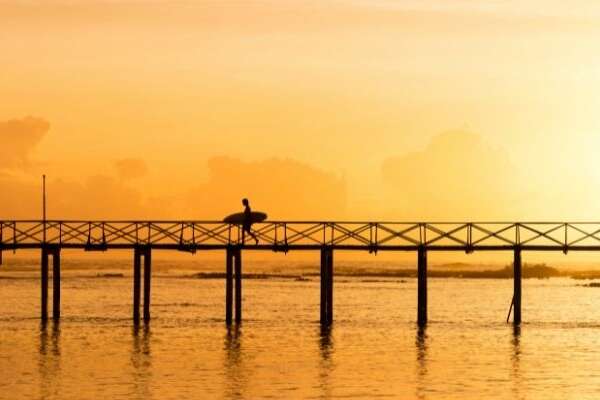
Siargao’s Cloud 9 Beach is a surfer’s paradise, boasting world-class waves and breathtaking natural beauty. This stunning destination is known as the “Surfing Capital of the Philippines,” offering surfers and…
-
Explore Siargao: the Surfing Capital of the Philippines

Unleash the adventurer in you and Discover Siargao, the ultimate tropical getaway in paradise. Situated in the Philippines, Siargao is renowned as the Surfing Capital of the country and was…
-
Discover the Unique Wonders of Mount Matutum

Located in the southern region of the Philippines, Mount Matutum boasts of its scenic beauty, captivating landscapes, and diverse flora and fauna. With its majestic peaks, verdant forests, and cascading waterfalls, this destination is perfect for nature lovers and adventure enthusiasts. Get ready to explore the unspoiled wilderness, trek through challenging trails, and immerse yourself…
-
The Beautiful Lake Sebu in South Cotabato
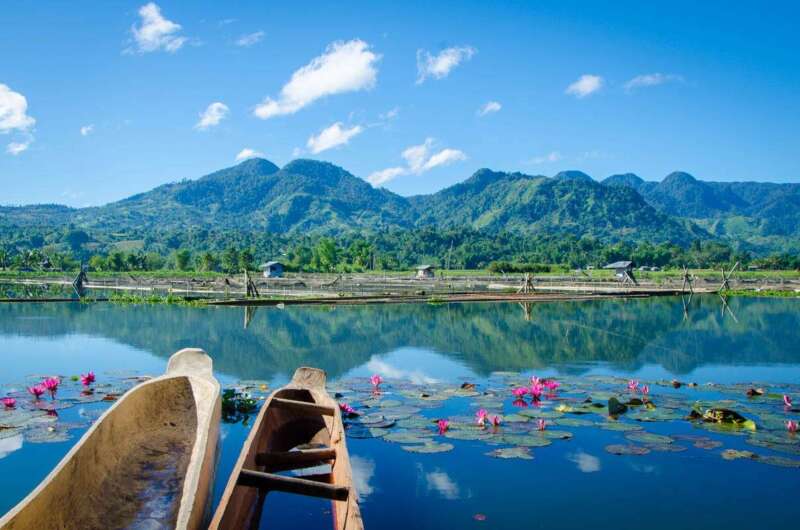
The serene and beautiful Lake Sebu is situated in the heart of South Cotabato. The lake, which is a favorite spot for both locals and tourists, is home to a variety of fauna.
-
Everything You Need to Know About Lake Holon
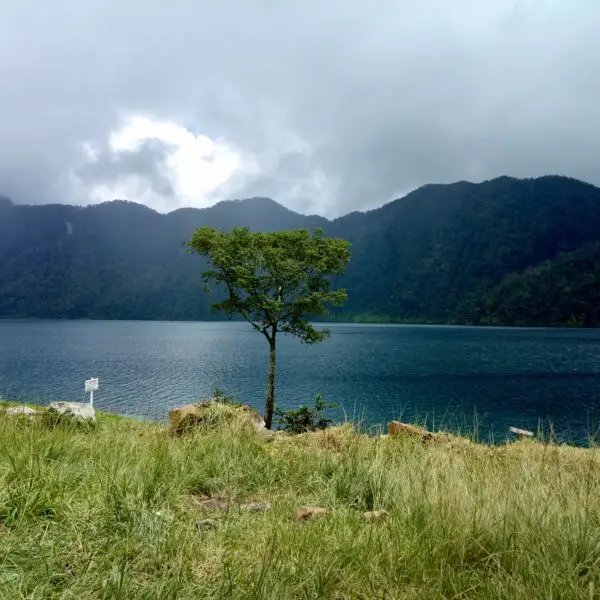
Discover the beauty of Lake Holon – a hidden gem located in the Philippines. Learn about its history, culture, and conservation efforts.
-
Dahilayan Forest Park Entrance Fee & All You Need To Know
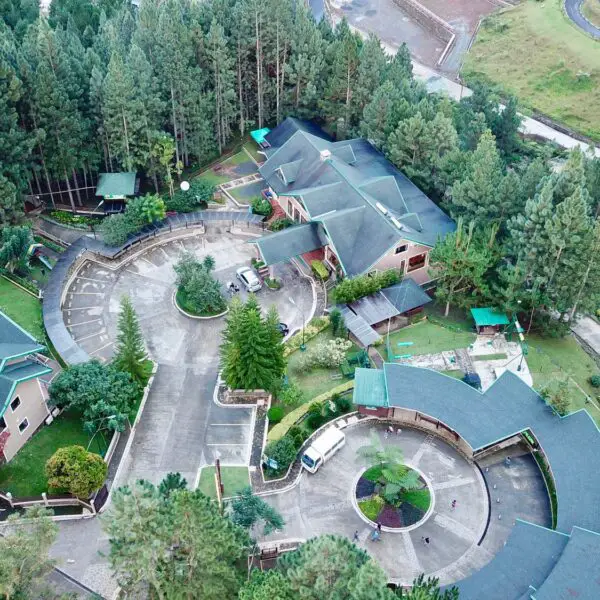
Embark on an unforgettable adventure at Dahilayan Forest Park. Our guide provides essential info, including the entrance fee, to help plan your visit.
-
RIDE THE FIRST ALPINE COASTER IN THE PHILIPPINES
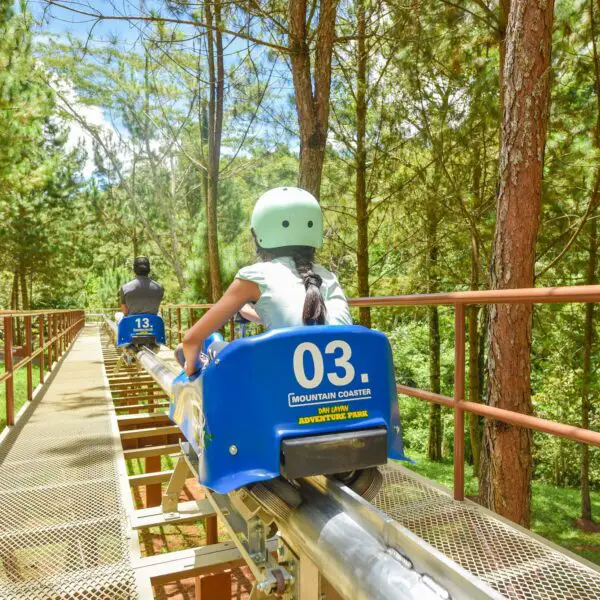
Experience the ultimate thrill ride on the first Alpine Coaster in the Philippines. Twist and turn through hairpin curves and steep drops while enjoying breathtaking views of the surrounding landscape. This exhilarating adventure is perfect for thrill-seekers and nature lovers alike. Get ready to take on the challenge and ride the Philippines’ first Alpine Coaster…
